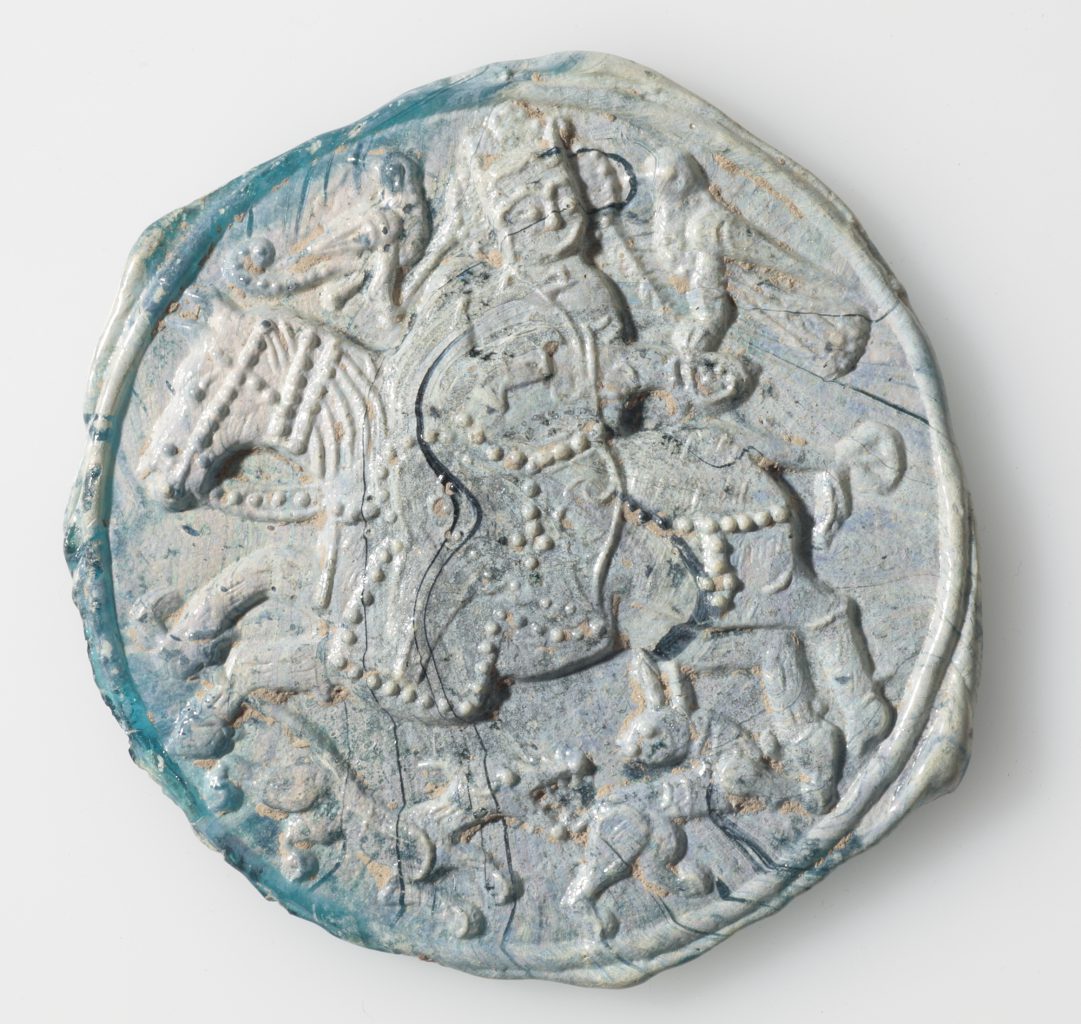



Title: Medallion
Date: 12th century AD
Location: Iran, Afghanistan or Central Asia
Materials: turquoise-blue glass, moulded and stamped in relief
Dimensions: 9.1cm (diameter)
Accession Number: GLS 608
Other Notes:
The medallion shows a mounted huntsman, facing backwards, with a falcon on his wrist. Below, a long-tailed hound pursues a hare, also with its head turned. The horse’s tail is knotted and its trappings and the saddlecloth are elaborately decorated with beading.
Relief-stamped coloured glass medallions were excavated in the ruins of a 12th-century palace at Termez on the Oxus, close to the Afghan-Uzbek frontier. Some have inscriptions dating them to the late Ghaznavid period (mid 12th century). They have also been reported at Ghazna in Afghanistan and may well have decorated other Ghaznavid palaces, for example at Nishapur. Too small and insufficiently translucent for window-panes, they were probably used to crown a stucco dado, where their remarkable detail could best be appreciated.
Bibliography:
S.M. Goldstein et al, Glass. From Sasanian Antecedents to European Imitations, The Nasser D Khalili Collection of Islamic Art, volume XV, London 2005, cat.157, pp.128–9.
J.M. Rogers, The Arts of Islam. Masterpieces from the Khalili Collection, London 2010, cat.152, p.127.
Zoom
Close

Create your own collection of artworks that you can print or save as a PDF. Please enter you email to enable feature.
Small Flask | JLY 1075
Has been added to your collection.
TIP:
You can now access and view your collection from the main menu at any time.